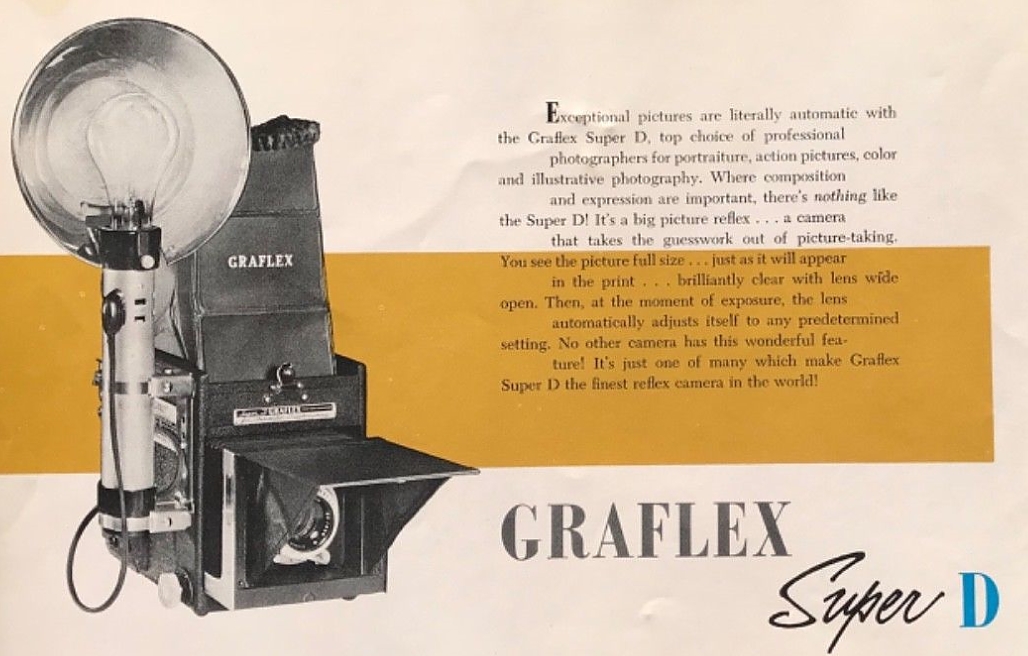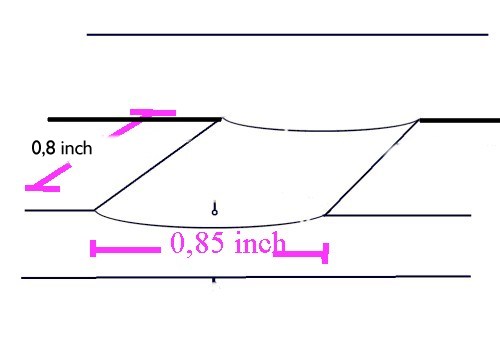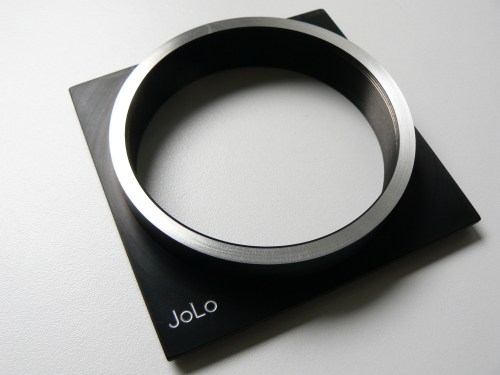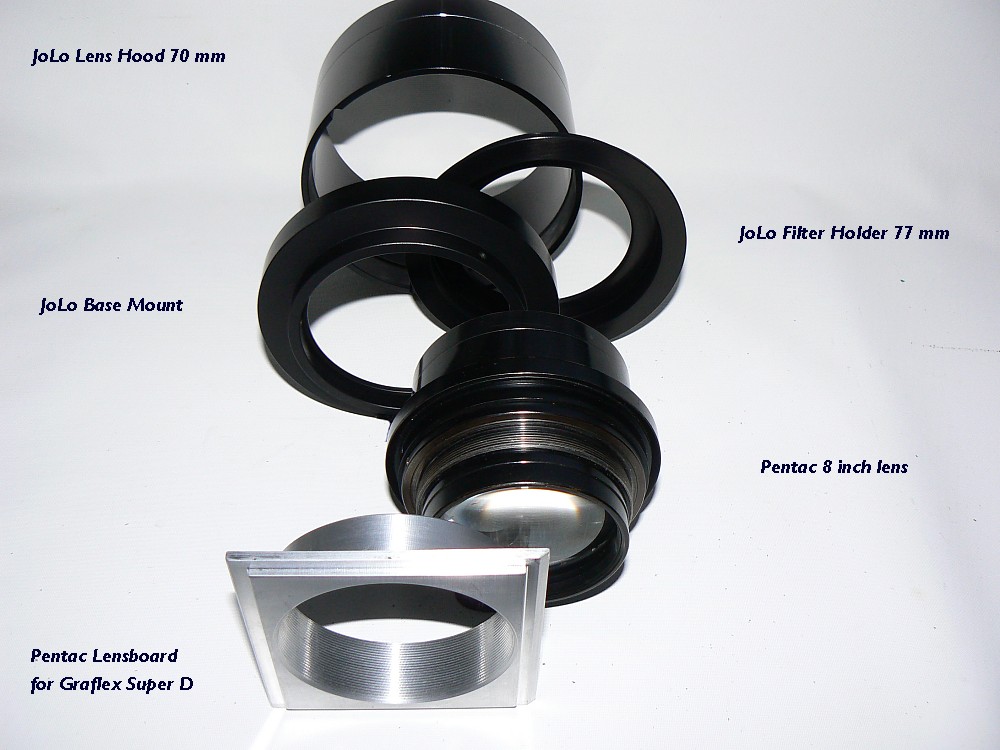

A very remarkable camera loved by professional photographers.
The Super D was the successor of the Graflex Series D used by the famous Dorothea Lang during the depression era. The Super D has a focal plane shutter as well as a front shutter just like its predecessor. However there were some new features such as the flash connector and the revolving back. It had a synchronisation for "open flash". The camera had a new front section and a larger focusing hood. The Super D was equipped with a shutter mechanism that made it possible to use the new semi automatic pre-set stop diaphragm.
The semi automatic diaphragm of the Super D enabled the photograph to focus the subject with open diaphragm. When firing, the release lever activates the pre selected diaphragm setting just before the mirror is rising. When the mirror is up, the curtain with the slit will pass along the film surface to expose. The diaphragm has to be manually re-cocked before each exposure. It is said that the automatic diaphragm was invented and patented by a Chicago photographer Torkel Korlin (1903-1998). The Super D sales did not came up to expectations, reason why Korling decided not to renewal the patent. Shortly after this sadly decision the automatic diaphragm became very popular with the 35 mm cameras.
The main reason to choose for such a camera was the fact that large format hand held photography was possible while watching the subject. High speed photography as well as portrait. The revolving back enables landscape as well as portrait mode just by turning the revolving back including the film holder or film pack.
These cameras accept the slotted-type Graflex holders: there is a groove down each side of these holders, and sliding bars fasten them to the rear of the camera. NOTE: These cameras do NOT accept modern 4x5 holders, which are slightly different in size, and lack the grooves.
The Graflex Super D was equipped with the ƒ: 5,6 Kodak 190 mm Lens. The large lens board permitted the use of lenses as fast as 2,9. A large range of lenses was available including a large barrel lens.
Summary in a nutshell.
A barrel lens is a lens without a
shutter.
You may use barrel lenses if your camera has been equiped with a focal plane
shutter.
The Super D has a build in focal plane shutter
The barrel lens should be mounted on a suitable lens board for the Super D
camera.
When using the original Super D Kodak 190 mm a lens the focal plane shutter should be set on "open"
On the other hand when using the focal plane shutter in combination with the
Kodak lens/shutter, the
front shutter should be set "open"
The advantage of the reflex camera and a pre
set diaphragm is obvious as
the photographer can compose the subject on the ground glass with wide open
diaphragm until the "moment supreme" . When pushing the release button
the diaphragm sets itself automatically in the predetermined setting.
Fast lenses are big and demand a large lens
board. The Super D lens board is 9,5 x 9,5 cm thus mostly enabling the use of fast
lenses.
Some of the very fast barrel lenses made for other purposes than portrait photography, can not find a place on the available lens boards. The Pentac 8 inch is such a lens. Originally designed for use in aero planes for recognition purposes, the lens became popular after the WWII as a portrait lens. The large format 5x7 inch studio cameras had a big lens board to hold these lenses. The camera however was too big for hand held photography. For many photographers it always was a dream to use such a 8" Pentac lens together with the Super D camera. Now the dream comes true.
This completely new development is the special designed Pentac lens board for use with the 4x5 Graflex Super D camera.
The Pentac 8" lens board enables the use of such an incredible beautiful lens, on the famous Graflex Super D.
As mentioned above, the Graflex Super D world famous 4x5 Reflex camera is equipped with a Focal Plane Shutter up to 1/1000 sec.
This shutter makes it possible to use barrel lenses such as the ƒ 2,9 Pentac 8 inch lens. However the problem was how to mount such a heavy big lens into the Super D camera.
The answer is a special designed lens board which fits into the front section of the Super D camera. This Pentac 8" lens board has a build in screw mount for easy and reliable lens mounting. Changing lenses will be a matter of seconds. Once positioned, the lens is automatically focused on infinity. Focusing can be done by turning the focus knob while watching the ground glass on top of the camera through the focusing hood. The mirror projects a sharp bright image of the subject on the ground glass. The large hood enables fine focusing with both eyes even in bright day light.
The diaphragm ring of the Pentac lens is slightly to big to fit into the front section frame of the Super D camera.
I was hoping that the new lens board would solve the problem. I designed the position of the threaded extended part in such a way that the lens could fit without altering the front section. However, after having tested this, it seems that we have to remove some mm of wood out of the inner front section frame to get enough space for the diaphragm ring.
By using a sharp knife it is easy to make a hollow out in the frame. Not dramatic. Just 1,5 square cm and the depth is only 3 mm at the deepest point.


Some black paint will camouflage the cut out.
There is one thing more. The flaps of the sunshade should be loosen from the inner frame. After having removed the screws, the flaps can be taped to the door.
The hinged door stays strait up open now.
Large Format Super D Hand Held Photography powered by a Pentac 8 lens board.

JoLo "Pentac-8 inch" lens board for use with Graflex Super D camera.

The JoLo special Pentac Super D lens board is no more available.
Also the filter holder and base mount are out of production.
There is however a new developed lens hood with a build in filter holder available.
To find out more about my products, please visit my order-form.